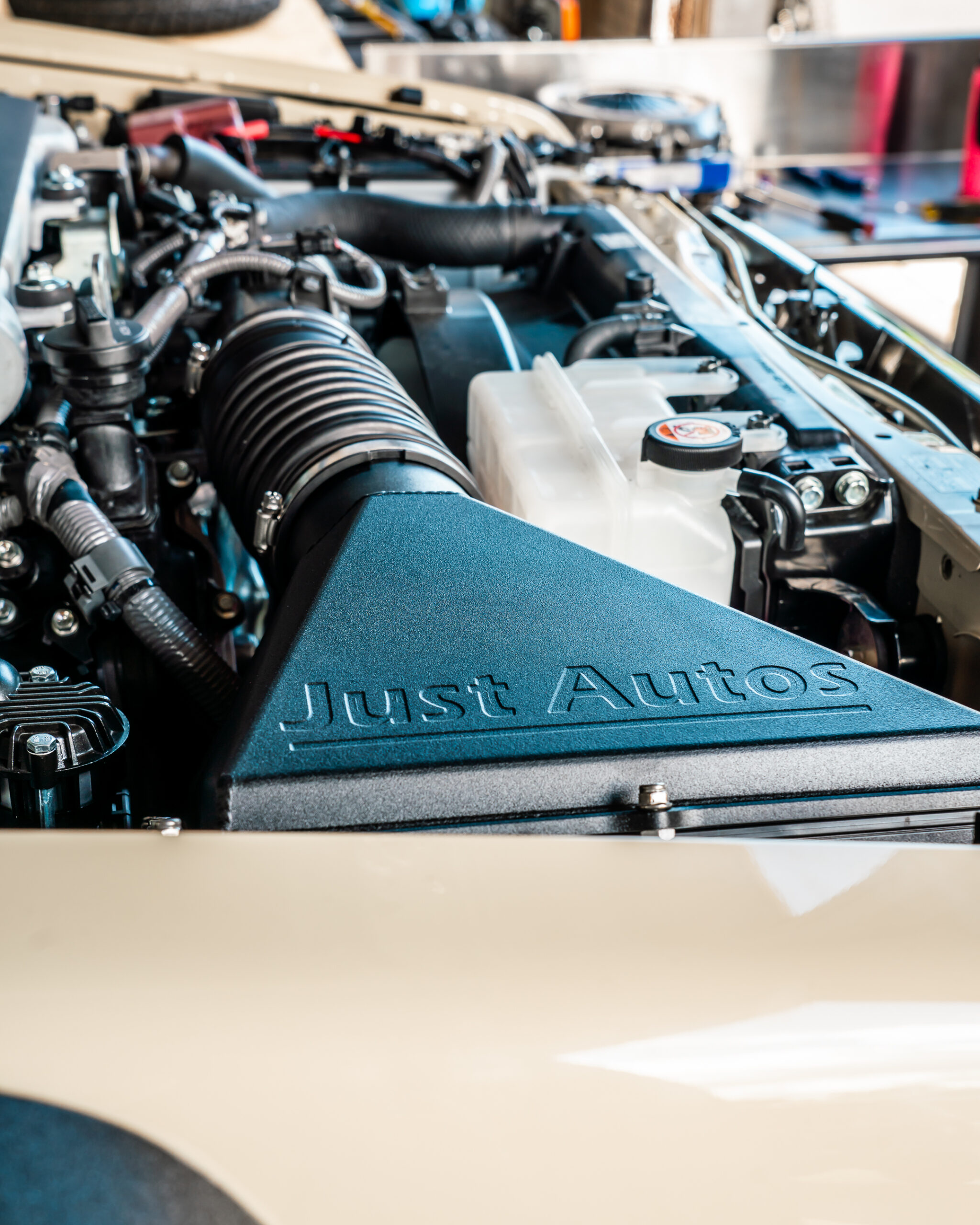If you’ve ever wondered about the various components that go into maximising your engine’s performance, we’ve got you covered! One small, yet mighty device that plays a crucial role in your Toyota engine’s efficiency is the Mass Air Flow (MAF) sensor.
By measuring the amount of air entering the engine, it provides data to the ECU to determine the correct fuel-to-air ratio. However, over time, the MAF sensor can become dirty and contaminated, affecting its accuracy and leading to issues such as decreased fuel efficiency and poor drivability. To keep your engine running smoothly, it’s essential to maintain your MAF sensor regularly.
In this post, we’ll explore the importance of MAF sensor maintenance, the symptoms of a dirty or faulty sensor, and step-by-step instructions on how to clean it effectively.

What is a Mass Air Flow Sensor & How Does It Work?
The mass air flow sensor (MAF) might be small in size, but its role in your vehicle’s electronic fuel injection system is nothing short of crucial. Located between the air filter and the throttle body, the MAF sensor measures the rate of air flowing into the engine and provides essential data for calculations of the right fuel-to-air ratio for efficient combustion.
Most modern vehicles use a hot wire MAF sensor, which consists of a heated wire and an ambient temperature wire. A microprocessor embedded within the sensor maintains the temperature of the hot wire at a specific level above the ambient air temperature. By measuring the energy required to maintain this temperature, the sensor calculates the airflow entering the engine where this information is then relayed to the ECU, which adjusts the fuel injection accordingly.
The Importance of MAF Sensor Maintenance
As the primary goal for the MAF sensor is to ensure efficient fuel injection, faulty and neglected sensors can cause a number of larger issues within your vehicle. This makes regular maintenance crucial:
- Optimal Fuel Efficiency: A clean and properly functioning MAF sensor ensures accurate measurement of the air entering the engine. This data allows the ECU to deliver the right amount of fuel, resulting in optimal fuel efficiency.
- Improved Engine Performance: A clean MAF sensor helps your engine perform at its best by maintaining the correct air-fuel ratio. You’ll experience smoother acceleration, reduced hesitation, and enhanced overall drivability.
- Prevent Costly Repairs: Neglecting MAF sensor maintenance can lead to more severe engine problems over time. A dirty or faulty sensor can cause engine misfires, increased emissions, and even damage to other components. Regular maintenance helps prevent these issues and avoids costly repairs.
Signs of a Dirty or Faulty MAF Sensor
It’s essential to be aware of the common signs indicating a dirty or faulty MAF sensor. If you notice any of the following symptoms, it may be time to clean or replace your sensor:
- Decreased Fuel Efficiency: A dirty or malfunctioning MAF sensor can cause your vehicle to consume more fuel than usual. If you find yourself making more frequent trips to the petrol station, it could be a sign of a problem with your sensor.
- Rough Idling: A dirty MAF sensor can affect the engine’s idle speed, causing it to run rough or hesitate when accelerating. You may experience jerking or a lack of power during acceleration.
- Check Engine Light: A malfunctioning MAF sensor often triggers the check engine light. If you see this warning indicator, it’s worth investigating the sensor as a possible cause.
- Black Smoke from the Exhaust: A rich air-fuel mixture (high fuel-to-air ratio) due to a dirty MAF sensor can result in black smoke coming from the exhaust. This excessive fuel can lead to increased emissions and decreased overall performance.

Cleaning Your Mass Air Flow Sensor
While any decrease in performance can be a cause for concern, cleaning your MAD sensor is relatively simple. With a few necessary tools and supplies, you can ensure that this small yet critical component operates at its best. Remember, a little maintenance goes a long way in preserving your vehicle’s performance!
Getting Prepped
Before diving into the cleaning process, make sure you have the following tools and supplies on hand:
- Screwdriver or wrench: To safely remove the MAF sensor from its housing.
- MAF sensor cleaner: Use a specialised cleaner designed to effectively remove dirt, dust, and other contaminants without causing damage.
- Lint-free cloth or towel: For gentle cleaning and drying of the sensor.
Step-by-Step Cleaning
1. Turn Off the Engine and Disconnect the Sensor
Ensure that the engine is turned off, and remove the keys from the ignition. Locate the MAF sensor, which is typically found between the air filter and the throttle body. Unplug the sensor from the vehicle’s electrical system.
2. Remove the Sensor
With the sensor unplugged, use the appropriate tool to loosen the clamps or brackets holding it in place. Slide the sensor assembly away from the tubing and carefully remove it from the air intake boot.
3. Clean the Sensor
Place the sensor on a towel or soft cloth for cleaning. Apply the MAF cleaner or recommended alternative by spraying 10-15 blasts around the inside of the sensor. Ensure that the cleaner reaches all the necessary components, including the sides, housing, connectors, and terminals. Be cautious not to let the cleaner come into contact with any hot wires or plates.
4. Reattach the Sensor
Allow the sensor to dry for a few seconds. Once dry, reattach the sensor to its original position in the air intake system. Make sure to tighten the clamps or brackets securely. Wait a few minutes before starting the vehicle to allow any remaining cleaning chemicals to evaporate.
Additional Tips for MAF Sensor Maintenance
To complement MAF sensor maintenance, it is also advisable to clean the airbox and intake system periodically. Removing any dirt, dust, or debris from these components helps prevent contamination of the MAF sensor, ensuring optimal airflow and overall performance.
Stay Informed, Drive Confidently
Maintaining your vehicle’s mass air flow sensor is vital for optimal engine performance and fuel efficiency. By regularly cleaning the sensor, you can prevent issues such as decreased fuel economy, rough idling, and engine hesitation.
Follow the step-by-step instructions provided in this guide to clean your MAF sensor effectively and enjoy a smoother driving experience! With proper maintenance, your MAF sensor will continue to provide accurate airflow measurements, contributing to a well-functioning engine.
So, tighten those seatbelts, hit the ignition, and get started with Just Autos today! Our performance experts offer tailored advice and a range of performance packages to help you get the most out of your Toyota.









